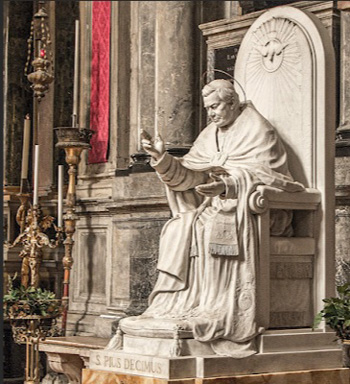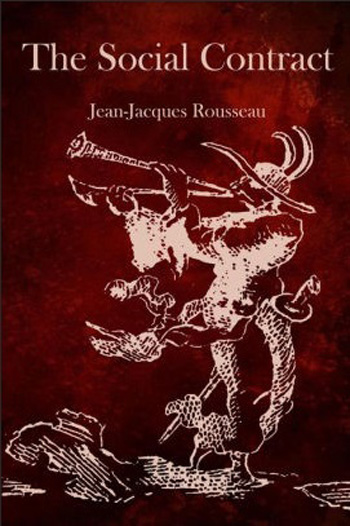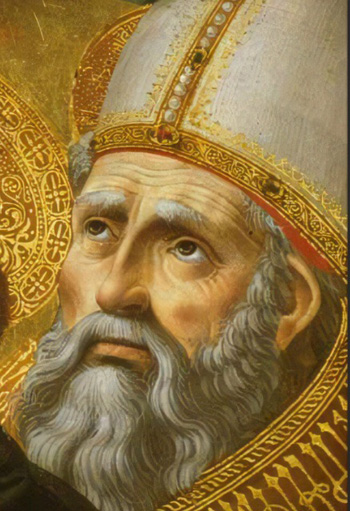Asuntos Tradicionalistas
 |
 |
 |
 |
 |
 |
 |
Misa de Diálogo - CXXIII
'Infalibilidad del Pueblo' versus Infalibilidad Papal
La supremacía papal fue el objetivo principal de la crítica modernista, de ahí los muchos llamados a la descentralización del papado y el reconocimiento de los laicos como el garante colectivo supremo e infalible de la fe. Para el padre George Tyrrell, el Papa era “simplemente el testigo y el representante de la mente y la voluntad colectivas de la Iglesia Universal”, y sus pronunciamientos ex cathedra son válidos “solo cuando es manifiestamente todo el cuerpo el que nos habla a través de ese órgano en particular”. (1) Y resumió así el papel del Papa:
 “Su oficio es investigar, declarar e imponer con autoridad oficial a cada uno aquella verdad que bajo la guía del Espíritu Santo ha sido elaborada en la mente de todos colectivamente como por su único órgano adecuado”. (2)
“Su oficio es investigar, declarar e imponer con autoridad oficial a cada uno aquella verdad que bajo la guía del Espíritu Santo ha sido elaborada en la mente de todos colectivamente como por su único órgano adecuado”. (2)
En otras palabras, el Papa está subordinado a la gente y solo puede enseñar lo que ya han decidido creer.
El Syllabus Lamentabili sane § 6 del Papa Pío X, sin embargo, había condenado bajo pena de excomunión la idea de que la función de la Iglesia es ratificar las conclusiones a las que llega el pueblo en general.
La posición de Tyrrell se revela así como el precursor del “Camino Sinodal” del Papa Francisco, derivado del pensamiento neomodernista del Vaticano II.
P. La 'Iglesia sin forma' de Tyrrell
La prolífica producción de trabajos publicados por el padre Tyrrell actuó como una especie de motor para la difusión del Modernismo en el siglo XX y hasta nuestros días. Sus ideas siguen siendo el modelo de inspiración para todos los que creen que el antiguo sistema de gobierno jerárquico de dos niveles era injusto y opresivo, y que hoy abogan por una “Iglesia sin muros/fronteras”. Escribió, por ejemplo, sobre una “Iglesia sin forma preconstitucional” de los primeros tiempos cristianos que, en su opinión, debe distinguirse de la “forma gubernamental”, siendo esta última una construcción creada de forma puramente artificial. (3)
 Incluso haría de esta iglesia sin forma la regla de la fe, basada nada más que en la “conciencia colectiva” de la multitud de creyentes:
Incluso haría de esta iglesia sin forma la regla de la fe, basada nada más que en la “conciencia colectiva” de la multitud de creyentes:
“La autoridad es algo inherente e inalienable de esa multitud misma; es la coacción moral del Espíritu Divino de Verdad y Justicia inmanente en el todo, dominante sobre sus diversas partes y miembros; es el imperativo de la conciencia colectiva.” (4)
Esto equivale a todo el cuerpo gobernado por la mente y la voluntad generales, (5) que es una forma de gobierno inspirada en el Contrato social de Rousseau. No hay lugar, por tanto, para un gobernante monárquico como el Papa. Como todos los modernistas de la época, el P. Tyrrell creía que “todo poder espiritual y moral es inherente a las personas y se deriva de las personas”. (6) Como el p. Tyrrell elaboró;
“Lo que Cristo fundó no fue la Iglesia jerárquica sino el pequeño cuerpo de hermanos misioneros, que posteriormente, bajo la guía del Espíritu de Cristo, se organizó en la Iglesia Católica; que no comisionó directamente a algunos de ellos para enseñar y gobernar a los demás; sino que encargó a todos por igual que fueran y enseñaran a todas las naciones y las prepararan por el bautismo del arrepentimiento y por una vida nueva para la venida instantánea del Reino de Dios sobre la tierra.”(7) [énfasis agregado]
No hay duda de que esto es exactamente lo que creen los progresistas, tanto clérigos como laicos, y que son apoyados en sus errores por altos funcionarios de la Iglesia.
Francisco cita incorrectamente las Escrituras para hacer un punto 'democrático'
Ahora hemos tenido al Papa Francisco haciéndose eco de estos sentimientos. El 17 de octubre de 2015 durante una ceremonia conmemorativa del 50 aniversario de la institución del Sínodo de los Obispos, sostuvo:
“Después de afirmar que el pueblo de Dios está compuesto por todos los bautizados que están llamados a 'ser casa espiritual y sacerdocio santo', el Concilio Vaticano II continuó diciendo que 'todo el cuerpo de los fieles, que tiene una unción que procede del Santo Espíritu (cf. 1 Jn 2,20.27), no puede errar en materia de fe. Esta característica se manifiesta en el sentido sobrenatural de la fe (sensus fidei) de todo el pueblo de Dios, cuando 'desde los obispos hasta los últimos fieles' manifiesta un consenso universal en materia de fe y la moral.' Estas son las famosas palabras infalibles 'in credendo'”.
El problema con este pasaje es que contiene, por decir lo menos, una serie de declaraciones seriamente engañosas, incluido un mal uso de la Primera Epístola de San Juan, extraída de Lumen gentium §12 para reforzar la novela didáctica del Vaticano II. La referencia del Papa al "consenso universal de todos los bautizados" no tiene sentido, porque no todos los cristianos bautizados, incluidos, por desgracia, los Papas y obispos modernos, siempre han permanecido fieles a la enseñanza de los Apóstoles.
 Tal infalibilidad, como siempre supieron los católicos anteriores al Concilio Vaticano II, solo puede aplicarse dentro de la unidad de la fe católica a aquellos que mandan con autoridad (la Jerarquía) y aquellos que obedecen con docilidad (los laicos). En otras palabras, como el P. George Leo Haydock (8) explicó en su comentario que expresa con precisión la interpretación tradicional de la Iglesia de 1 Juan 2:20, solo los “verdaderos hijos de la Iglesia de Dios, permaneciendo en unidad, bajo la guía de sus legítimos pastores, participan de la gracia del Espíritu Santo, prometida a la Iglesia y a sus pastores”. (9)
Tal infalibilidad, como siempre supieron los católicos anteriores al Concilio Vaticano II, solo puede aplicarse dentro de la unidad de la fe católica a aquellos que mandan con autoridad (la Jerarquía) y aquellos que obedecen con docilidad (los laicos). En otras palabras, como el P. George Leo Haydock (8) explicó en su comentario que expresa con precisión la interpretación tradicional de la Iglesia de 1 Juan 2:20, solo los “verdaderos hijos de la Iglesia de Dios, permaneciendo en unidad, bajo la guía de sus legítimos pastores, participan de la gracia del Espíritu Santo, prometida a la Iglesia y a sus pastores”. (9)
Ese era el verdadero significado de 1 Juan 2:20 que el Papa Francisco tergiversa porque, como todos los progresistas influenciados por el Modernismo, no quiere reconocer que los miembros de la Jerarquía , como Sucesores de los Apóstoles, son la Ecclesia Docens cuyo deber es custodiar el Depósito de la Fe y asegurar la unidad en la doctrina.
Irónicamente, la Primera Epístola de San Juan fue escrita precisamente como una advertencia sobre los peligros de los “falsos profetas” que seducen a los fieles con teorías que los inducen al error. En él, San Juan les recuerda que tienen en la Iglesia todos los conocimientos e instrucción necesarios, para que no tengan necesidad de buscarlos en otra parte, ya que sólo pueden encontrarse en aquella sociedad de la que son miembros. Es una declaración sobre la “sociedad perfecta” de la Iglesia, que los líderes progresistas de la Iglesia rechazan, no un reconocimiento de la infalibilidad personal de todos los bautizados.
Del mismo modo, en relación con 1 Juan 2:27, también mal interpretado por el Papa Francisco, la “unción” (que San Juan llama “unción”) significa la verdadera doctrina que los fieles han recibido del Espíritu Santo a través de la enseñanza de los Apóstoles. Mientras que San Juan les decía a los fieles que evitaran a los maestros de falsas doctrinas, el Papa Francisco ha alentado una proliferación de ellos junto con sus novedades doctrinales que no pueden reconciliarse con la Tradición.
Tomarse libertades con pasajes de la Escritura y de los Padres de la Iglesia para justificar las propias ideas es una forma segura de dar licencia a todos los errores modernistas condenados por los Papas anteriores.
El Vaticano II (y el Papa Francisco) citan erróneamente a San Agustín
También debe mencionarse que las palabras de San Agustín “desde los obispos hasta el último de los fieles” citadas de Lumen gentium han sido arrancadas de su contexto original y hechas para servir a un propósito diferente. Estas palabras, tomadas del libro de San Agustín Sobre la predestinación, tenían un objetivo específico: refutar los errores de los pelagianos y mostrar que el Libro de la Sabiduría está dotado de la autoridad de la Escritura canónica. Es por esto que San Agustín dijo acerca de la Sabiduría:
 “[Merece] ser escuchado por todos los cristianos, desde los obispos hacia abajo, hasta los más bajos creyentes laicos, penitentes y catecúmenos, con veneración a la autoridad divina”. (10)
“[Merece] ser escuchado por todos los cristianos, desde los obispos hacia abajo, hasta los más bajos creyentes laicos, penitentes y catecúmenos, con veneración a la autoridad divina”. (10)
Se sigue, naturalmente, que los fieles de cada época que la aceptan sobre esa base están infaliblemente justificados al hacerlo, no porque sean infalibles en sí mismos (como la Lumen gentium nos hace creer), sino porque de la infalibilidad de la Escritura y la Tradición que han sido fielmente guardadas y transmitidas a ellos por la Jerarquía de la Iglesia.
Muy diferente es el enfoque de Lumen gentium §12 que usa la frase de San Agustín, pero sin su referencia a la “autoridad divina” mediada a través de la Jerarquía como base para la infalibilidad en el creer. En cambio, promovió lo que generalmente se percibe como una "Iglesia carismática" en la que los cristianos individuales reciben dones espirituales especiales (charismata) directamente de Dios "para emprender las diversas tareas y oficios que contribuyen a la renovación y edificación de la Iglesia.”
La retórica inflada de la Lumen gentium §12 con su visión pretenciosa, tan típica de los documentos del Vaticano II, es simplemente una forma de doble discurso que disfraza una agenda progresista perjudicial para la Ecclesia Docens. La tarea de custodiar la Fe se entiende ahora como responsabilidad de la Iglesia toda, colaborando en el oficio de enseñar, más que como posesión exclusiva del Magisterio.
Pero esta posición insostenible – que “la 'Iglesia que aprende' y la 'Iglesia que enseña' colaboran de tal manera en definir verdades que sólo le queda a la 'Iglesia que enseña' sancionar las opiniones de la 'Iglesia que aprende'” – había sido condenado en 1907 por el Papa Pío X (Lamentabili sane § 6) como herejía. Como resultado, la enseñanza del Vaticano II está desprovista de fuerza autoritaria. Es significativo que este modelo democrático de la Iglesia, construido sobre la liberación del “Pueblo de Dios” del control “clericalista”, tenga un extraño parecido con el propuesto por el P. Tyrrell.
La situación de la Iglesia post-Vaticano II plantea la pregunta de quién, entonces, necesita un Papa para garantizar la infalibilidad de la doctrina, si todo lo que se necesita es consultar al Martín Lutero interior de uno u hojear las obras del P. Tyrrell.
To be continued

Lamentabili sane de San Pío X condenó la proposición del P. Tyrrel repetida por el Papa Francisco
En otras palabras, el Papa está subordinado a la gente y solo puede enseñar lo que ya han decidido creer.
El Syllabus Lamentabili sane § 6 del Papa Pío X, sin embargo, había condenado bajo pena de excomunión la idea de que la función de la Iglesia es ratificar las conclusiones a las que llega el pueblo en general.
La posición de Tyrrell se revela así como el precursor del “Camino Sinodal” del Papa Francisco, derivado del pensamiento neomodernista del Vaticano II.
P. La 'Iglesia sin forma' de Tyrrell
La prolífica producción de trabajos publicados por el padre Tyrrell actuó como una especie de motor para la difusión del Modernismo en el siglo XX y hasta nuestros días. Sus ideas siguen siendo el modelo de inspiración para todos los que creen que el antiguo sistema de gobierno jerárquico de dos niveles era injusto y opresivo, y que hoy abogan por una “Iglesia sin muros/fronteras”. Escribió, por ejemplo, sobre una “Iglesia sin forma preconstitucional” de los primeros tiempos cristianos que, en su opinión, debe distinguirse de la “forma gubernamental”, siendo esta última una construcción creada de forma puramente artificial. (3)

Los progresistas aplican los principios del Contrato Social para destruir la Monarquía en la Iglesia
“La autoridad es algo inherente e inalienable de esa multitud misma; es la coacción moral del Espíritu Divino de Verdad y Justicia inmanente en el todo, dominante sobre sus diversas partes y miembros; es el imperativo de la conciencia colectiva.” (4)
Esto equivale a todo el cuerpo gobernado por la mente y la voluntad generales, (5) que es una forma de gobierno inspirada en el Contrato social de Rousseau. No hay lugar, por tanto, para un gobernante monárquico como el Papa. Como todos los modernistas de la época, el P. Tyrrell creía que “todo poder espiritual y moral es inherente a las personas y se deriva de las personas”. (6) Como el p. Tyrrell elaboró;
“Lo que Cristo fundó no fue la Iglesia jerárquica sino el pequeño cuerpo de hermanos misioneros, que posteriormente, bajo la guía del Espíritu de Cristo, se organizó en la Iglesia Católica; que no comisionó directamente a algunos de ellos para enseñar y gobernar a los demás; sino que encargó a todos por igual que fueran y enseñaran a todas las naciones y las prepararan por el bautismo del arrepentimiento y por una vida nueva para la venida instantánea del Reino de Dios sobre la tierra.”(7) [énfasis agregado]
No hay duda de que esto es exactamente lo que creen los progresistas, tanto clérigos como laicos, y que son apoyados en sus errores por altos funcionarios de la Iglesia.
Francisco cita incorrectamente las Escrituras para hacer un punto 'democrático'
Ahora hemos tenido al Papa Francisco haciéndose eco de estos sentimientos. El 17 de octubre de 2015 durante una ceremonia conmemorativa del 50 aniversario de la institución del Sínodo de los Obispos, sostuvo:
“Después de afirmar que el pueblo de Dios está compuesto por todos los bautizados que están llamados a 'ser casa espiritual y sacerdocio santo', el Concilio Vaticano II continuó diciendo que 'todo el cuerpo de los fieles, que tiene una unción que procede del Santo Espíritu (cf. 1 Jn 2,20.27), no puede errar en materia de fe. Esta característica se manifiesta en el sentido sobrenatural de la fe (sensus fidei) de todo el pueblo de Dios, cuando 'desde los obispos hasta los últimos fieles' manifiesta un consenso universal en materia de fe y la moral.' Estas son las famosas palabras infalibles 'in credendo'”.
El problema con este pasaje es que contiene, por decir lo menos, una serie de declaraciones seriamente engañosas, incluido un mal uso de la Primera Epístola de San Juan, extraída de Lumen gentium §12 para reforzar la novela didáctica del Vaticano II. La referencia del Papa al "consenso universal de todos los bautizados" no tiene sentido, porque no todos los cristianos bautizados, incluidos, por desgracia, los Papas y obispos modernos, siempre han permanecido fieles a la enseñanza de los Apóstoles.

P. George Leo Haydock
Ese era el verdadero significado de 1 Juan 2:20 que el Papa Francisco tergiversa porque, como todos los progresistas influenciados por el Modernismo, no quiere reconocer que los miembros de la Jerarquía , como Sucesores de los Apóstoles, son la Ecclesia Docens cuyo deber es custodiar el Depósito de la Fe y asegurar la unidad en la doctrina.
Irónicamente, la Primera Epístola de San Juan fue escrita precisamente como una advertencia sobre los peligros de los “falsos profetas” que seducen a los fieles con teorías que los inducen al error. En él, San Juan les recuerda que tienen en la Iglesia todos los conocimientos e instrucción necesarios, para que no tengan necesidad de buscarlos en otra parte, ya que sólo pueden encontrarse en aquella sociedad de la que son miembros. Es una declaración sobre la “sociedad perfecta” de la Iglesia, que los líderes progresistas de la Iglesia rechazan, no un reconocimiento de la infalibilidad personal de todos los bautizados.
Del mismo modo, en relación con 1 Juan 2:27, también mal interpretado por el Papa Francisco, la “unción” (que San Juan llama “unción”) significa la verdadera doctrina que los fieles han recibido del Espíritu Santo a través de la enseñanza de los Apóstoles. Mientras que San Juan les decía a los fieles que evitaran a los maestros de falsas doctrinas, el Papa Francisco ha alentado una proliferación de ellos junto con sus novedades doctrinales que no pueden reconciliarse con la Tradición.
Tomarse libertades con pasajes de la Escritura y de los Padres de la Iglesia para justificar las propias ideas es una forma segura de dar licencia a todos los errores modernistas condenados por los Papas anteriores.
El Vaticano II (y el Papa Francisco) citan erróneamente a San Agustín
También debe mencionarse que las palabras de San Agustín “desde los obispos hasta el último de los fieles” citadas de Lumen gentium han sido arrancadas de su contexto original y hechas para servir a un propósito diferente. Estas palabras, tomadas del libro de San Agustín Sobre la predestinación, tenían un objetivo específico: refutar los errores de los pelagianos y mostrar que el Libro de la Sabiduría está dotado de la autoridad de la Escritura canónica. Es por esto que San Agustín dijo acerca de la Sabiduría:

Se cita erróneamente a San Agustín de Hipona para justificar la supuesta infalibilidad del pueblo
Se sigue, naturalmente, que los fieles de cada época que la aceptan sobre esa base están infaliblemente justificados al hacerlo, no porque sean infalibles en sí mismos (como la Lumen gentium nos hace creer), sino porque de la infalibilidad de la Escritura y la Tradición que han sido fielmente guardadas y transmitidas a ellos por la Jerarquía de la Iglesia.
Muy diferente es el enfoque de Lumen gentium §12 que usa la frase de San Agustín, pero sin su referencia a la “autoridad divina” mediada a través de la Jerarquía como base para la infalibilidad en el creer. En cambio, promovió lo que generalmente se percibe como una "Iglesia carismática" en la que los cristianos individuales reciben dones espirituales especiales (charismata) directamente de Dios "para emprender las diversas tareas y oficios que contribuyen a la renovación y edificación de la Iglesia.”
La retórica inflada de la Lumen gentium §12 con su visión pretenciosa, tan típica de los documentos del Vaticano II, es simplemente una forma de doble discurso que disfraza una agenda progresista perjudicial para la Ecclesia Docens. La tarea de custodiar la Fe se entiende ahora como responsabilidad de la Iglesia toda, colaborando en el oficio de enseñar, más que como posesión exclusiva del Magisterio.
Pero esta posición insostenible – que “la 'Iglesia que aprende' y la 'Iglesia que enseña' colaboran de tal manera en definir verdades que sólo le queda a la 'Iglesia que enseña' sancionar las opiniones de la 'Iglesia que aprende'” – había sido condenado en 1907 por el Papa Pío X (Lamentabili sane § 6) como herejía. Como resultado, la enseñanza del Vaticano II está desprovista de fuerza autoritaria. Es significativo que este modelo democrático de la Iglesia, construido sobre la liberación del “Pueblo de Dios” del control “clericalista”, tenga un extraño parecido con el propuesto por el P. Tyrrell.
La situación de la Iglesia post-Vaticano II plantea la pregunta de quién, entonces, necesita un Papa para garantizar la infalibilidad de la doctrina, si todo lo que se necesita es consultar al Martín Lutero interior de uno u hojear las obras del P. Tyrrell.
To be continued
- George Tyrrell, Medievalism, a Reply to Cardinal Mercier, London: Longmans, Green, and Co., 1908, p. 43.
- G. Tyrrell, The Church and the Future, London: Priory Press, 1910, p. 100.
- G. Tyrrell, Through Scylla and Charybdis or, The old theology and the new, Longmans, Green, 1907, p. 49.
- Ibid., p. 370.
- G. Tyrell, The Church and the Future, p. 133.
- G. Tyrrell, Through Scylla and Charybdis, p. 355.
- G. Tyrrell, Medievalism, pp. 138-139.
- Fr. George Leo Haydock (1774–1849), a descendant an old English Catholic recusant family, spent much of his life serving in Catholic missions in rural England. He was related to Blessed George Haydock who was martyred for the Faith at Tyburn in 1584.
- See Haydock’s Catholic Bible Commentary (Edward Dunigan and Brother, 1859). Based on the Douay-Rheims Bible, and containing many contributions from the Church Fathers, it was highly regarded as an authoritative commentary on the Old and New Testaments. Before Vatican II, it enjoyed popularity throughout the English-speaking world, but was supplanted by a host of modernized versions e.g. the Confraternity Bible (1941) and the New American Bible (1970).
- St. Augustine, De Praedestinatione Sanctorum (On the Predestination of the Saints), Opera Omnia. Patrologia Latina, vol. 44, Paris: Garnier, 1879, Chapter 14, § 27, p. 980.
Publicado el 7 de febrero de 2023
______________________
______________________
 Volume I |
 Volume II |
 Volume III |
 Volume IV |
 Volume V |
 Volume VI |
 Volume VII |
 Volume VIII |
 Volume IX |
 Volume X |
 Volume XI |
 Special Edition |



